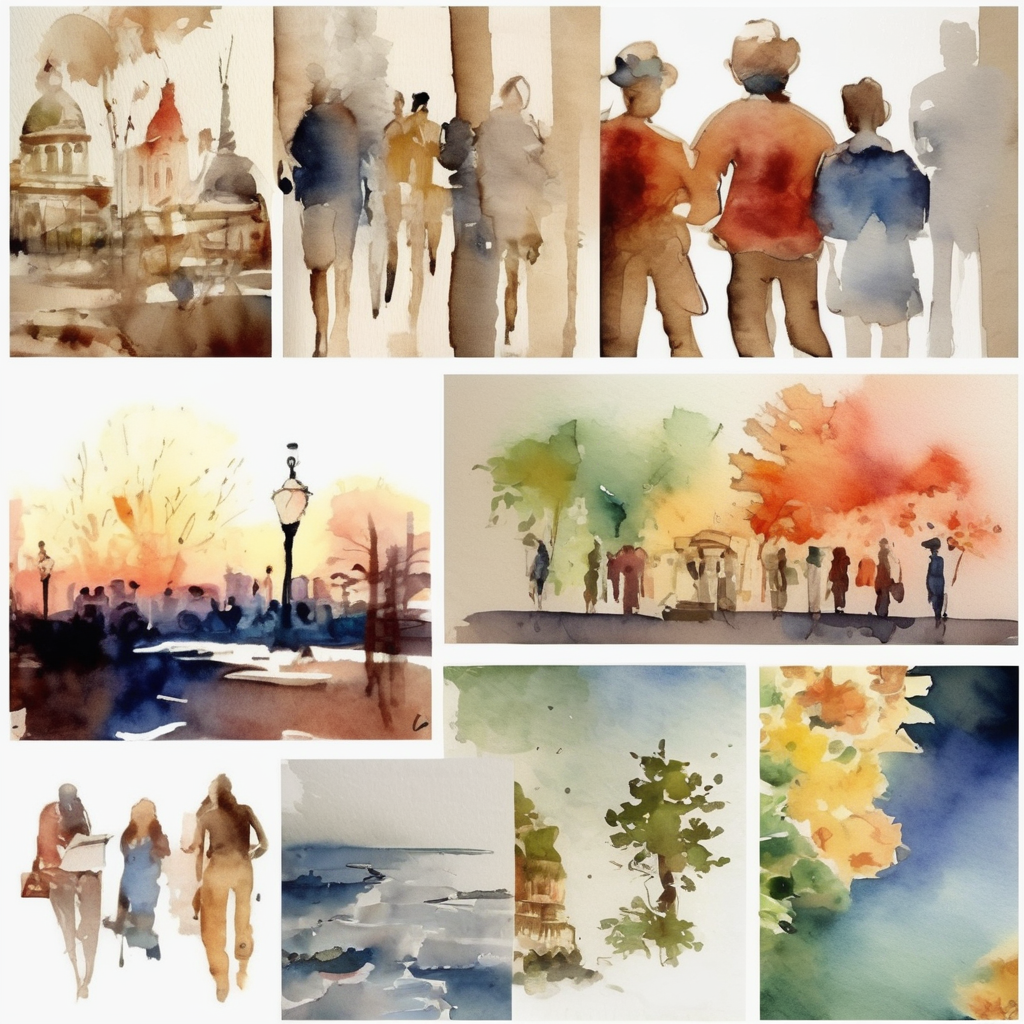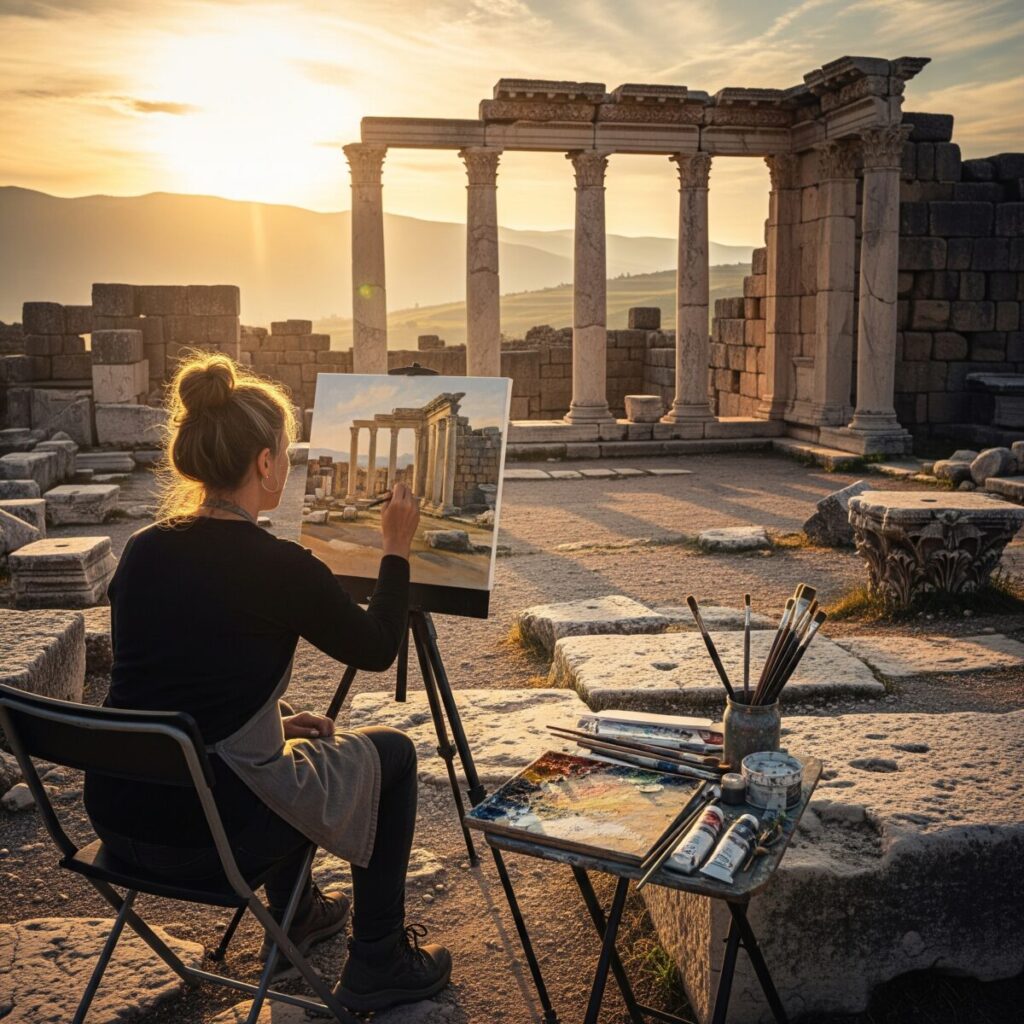Painting subject matter or genre—this is what people look at when they view art. But if you’re wondering what really makes a painting stand out, the answer is the subject matter. Whether it’s a serene landscape, a detailed portrait, or an intense abstract artwork, the subject decides what grabs attention.
When an artist begins working, their first question is often: “What’s my subject?” This is more than just deciding on objects or scenery—it’s about the theme or idea they want to express. And while abstract paintings can sometimes leave you questioning the intention, there’s always a deeper purpose behind the brushstrokes. It’s not random—it’s artistic expression at its finest.
Types of Painting Subject Matter

Let’s dive into some common types of painting subject matter:
1. Still Life
A still life painting captures everyday objects—fruits, vases, flowers—giving them new life on canvas. The beauty lies in the details. From the subtle shifts in light to the composition, it’s the artist’s task to turn the mundane into a work of art. Still-life paintings are also a great playground for those starting out, as they allow a lot of practice with techniques, from oil painting to watercolors.
2. Portraits
Portrait paintings are a chance to capture a person’s character or mood. It’s not just about painting a face. A portrait, whether it’s of a historical figure or a loved one, tells a story. Look at Van Gogh’s portraits. You’re not just seeing a man—you’re seeing his struggles, his intensity.
Good portraits go beyond likeness; they give insight into the subject’s life, personality, and emotions. This is why some of the most iconic works of art through history have been portraits.
3. Landscapes
If you love the outdoors, landscape paintings are all about capturing nature’s raw beauty. From mountains to sunsets, these works can transport you. Ever heard of plein air painting? It’s a technique where artists paint on-site, experiencing the environment first-hand as they create. It’s raw, real, and brings the artist closer to their subject.
4. Abstract Art
Now, if you want to get a little more thought-provoking, there’s abstract art. Instead of focusing on a direct depiction, artists dive into emotions, concepts, and ideas. You may look at an abstract painting and feel something without fully understanding why. That’s the beauty of it. It breaks the rules, making viewers interpret their own meaning.
Whether it’s geometric shapes or chaotic splashes of color, the intention is to push boundaries. It’s more about how the painting makes you feel than what it shows. Think of Picasso’s works—they challenge your perception of reality, yet leave a lasting impression.
Why Subject Matter is Essential
The subject matter isn’t just there for the artist—it shapes how you, the viewer, engage with the piece. A portrait might make you reflect on a person’s struggles, while an abstract painting can evoke an emotional reaction. Even a simple landscape can remind you of your last holiday or your dream destination. The subject invites you into the artist’s world and lets you experience their perspective.
Plus, subject matter allows for creativity. A painter might take a simple flower and use it to explore deeper themes like beauty and decay. Another might use abstract ideas to depict complex emotions. That’s why choosing the right subject is crucial—it’s the foundation that everything else builds upon.
How Painters Choose Their Subject Matter
There’s no strict formula to follow. Some artists look inward, using personal experiences, while others look outward for artistic inspiration. A few common factors come into play when choosing subject matter:
- Emotion: How does the subject make the artist feel?
- Experience: Artists often reflect on their own life experiences.
- Style: Is the painting going to be realistic or abstract? The subject influences this.
- Audience: Who’s going to see this? Will they connect with the theme?
While representational painting (where the subject is recognizable) might seem straightforward, even the simplest painting has layers of meaning. A still-life artwork could be more than just a bowl of fruit—it could symbolize wealth, mortality, or tradition.
Abstract vs. Representational Painting
Here’s where it gets interesting: Representational painting is all about accurate portrayal—things look like they do in real life. Think of classic landscapes or portraits.

On the flip side, abstract art doesn’t stick to what you see every day. It’s not about objects or faces—it’s about feelings, forms, and abstractions. You might stare at an abstract piece and wonder, “What’s this supposed to be?” But that’s the beauty of it. The subject matter is open to interpretation.
The Importance of Composition
No matter the subject matter, composition plays a huge role in how a painting is experienced. How are the objects, people, or forms arranged on the canvas? The balance, perspective, and aesthetics of the artwork can make or break it.
In abstract artwork, composition might seem random, but it’s often carefully thought out. The way shapes and colors interact with each other creates a rhythm that guides the viewer’s eye across the canvas. Even in a chaotic splatter painting, there’s a method to the madness.
Artistic Inspiration and Subject Matter
Finding the right subject can be a struggle for many artists. Whether it’s staring at a blank canvas or deciding how to take a fresh look at your subject matter, inspiration isn’t always easy to find. But that’s the thing about art—it’s meant to challenge both the painter and the viewer.
The best advice? Look at your surroundings, draw from personal experiences, and always be curious. From watercolor paintings to graphic art, the subject is everywhere. You just need to be open to it.
Final Thoughts
The subject matter of a painting is more than just what meets the eye—it’s the message, the mood, and the soul of the work. Whether you’re a fan of still life, landscapes, or abstract paintings, the subject is what brings art to life.
If you’re an artist, always remember—what you choose to paint says as much about you as it does the painting.
Podcast on Genres
Study Guide for Genres and Subject Matter
Unleash your artistic vision with this comprehensive guide to painting subject matter. Explore a variety of genres, from landscapes and portraits to still lifes and abstract art. Discover how to choose compelling themes, master composition techniques, and evoke powerful emotions through your brushstrokes.
The Digital Canvas: How Technology Impact on Contemporary Portraiture is Revolutionizing Art
Imagine walking into an art gallery where portraits aren’t just hanging on walls—they’re moving, responding…
The Art of the Tag: A Deep Dive into Letter Graffiti Art
Modern letter graffiti showcases the evolution from simple tags to complex artistic expressions Imagine walking…
Easy Landscape Drawing Ideas: Simple Scenes for Beginners
Drawing landscapes might seem intimidating when you’re just starting out, especially when you look at…
From Vandalism to Vanguard: How Graffiti Art Became a Multi-Million Dollar Movement
Graffiti art has exploded from the shadows of urban streets to become one of the…
What is Folk Art? A Journey into the Art of the People
Have you ever seen a handmade quilt passed down through generations, a beautifully carved wooden…
Ancient Ruins & Historical Sites to Visit : Finding Dramatic Settings for Your Landscape Paintings
When you’re searching for historical sites to visit that will inspire your next masterpiece, ancient…
(ziz52)









